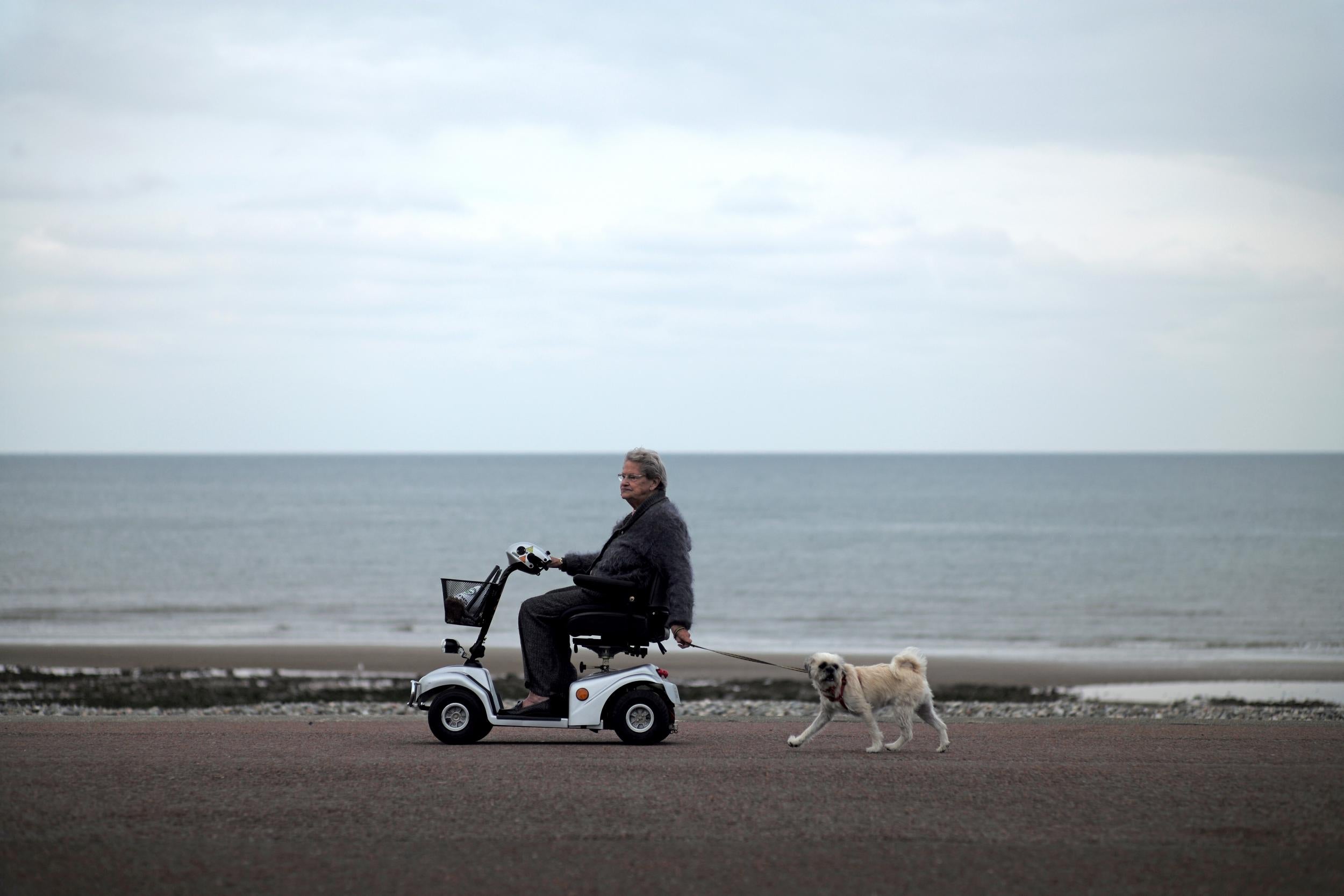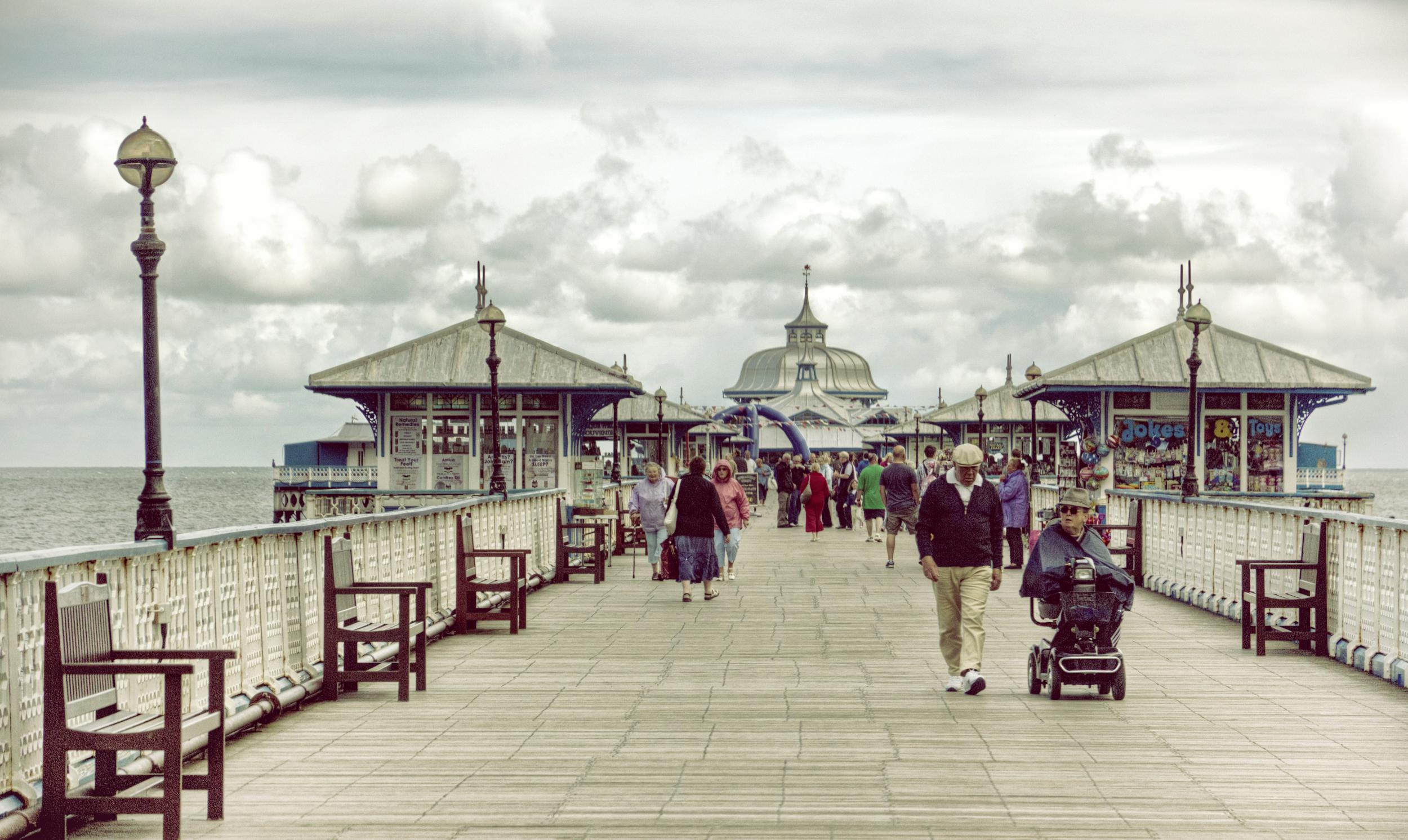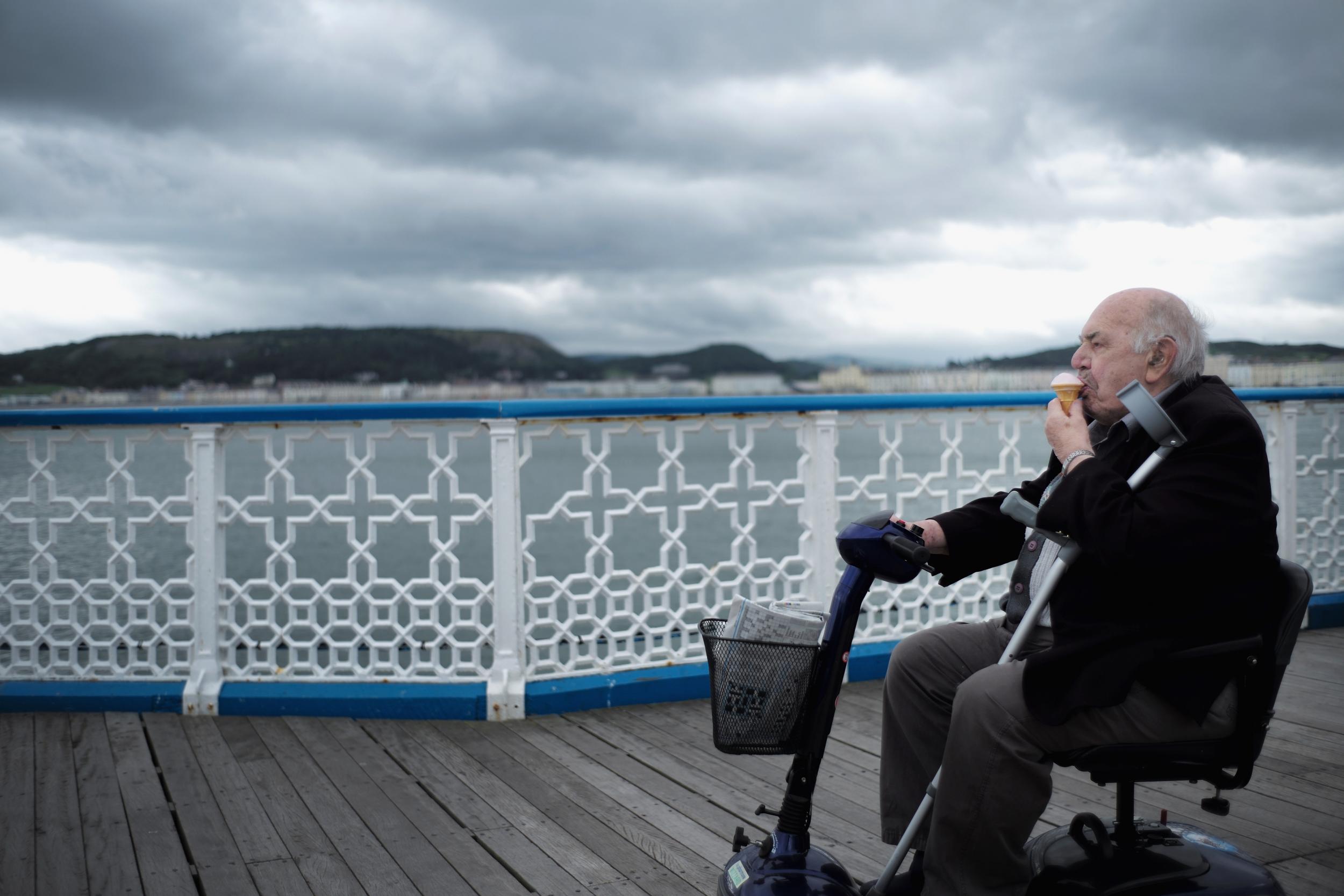Testing mobility scooters in Llandudno and entering the invisible world of their Centaurian owners
'My first sensation was a mixture of exhilaration and freedom: pedestrians made way for me, and I felt the rush of wind in my hair.' Matthew Barnett test drives a mobility scooter

Your support helps us to tell the story
From reproductive rights to climate change to Big Tech, The Independent is on the ground when the story is developing. Whether it's investigating the financials of Elon Musk's pro-Trump PAC or producing our latest documentary, 'The A Word', which shines a light on the American women fighting for reproductive rights, we know how important it is to parse out the facts from the messaging.
At such a critical moment in US history, we need reporters on the ground. Your donation allows us to keep sending journalists to speak to both sides of the story.
The Independent is trusted by Americans across the entire political spectrum. And unlike many other quality news outlets, we choose not to lock Americans out of our reporting and analysis with paywalls. We believe quality journalism should be available to everyone, paid for by those who can afford it.
Your support makes all the difference.I’ve been fascinated by mobility scooters for some time now. Not by the actual scooters, their look and design, but the users. Who are those curious denizens of a parallel world, gliding along supermarket aisles or gathering together on seaside promenades like some other-worldly centaurean breed of half-man, half-machine?
And above all, I wondered what it must be like to use one? How does it feel? How do others relate to you? How does one qualify for what is still technically, yet somewhat misleadingly, known as an “invalid carriage”?
There was only one way to find out. After some careful research and underground lobbying of scooter aficionados (believe me, they do exist), it seemed that all roads led to that mecca of mobility scooters and “Queen of Welsh Resorts”, Llandudno. Where better than a place where one in four residents is over the age of 65, which has a thriving Disability Football Club and whose spacious mid-Victorian streets and acres of promenade offer almost unlimited potential for the earnest scooter enthusiast?
One of Llandudno’s largest suppliers of mobility scooters is Abergele Mobility and it was there that I met Carol Taberner, a veritable oracle on the subject. I began by asking her what the chief differences are between various scooters and for an overview of the regulations.

She told me there are broadly two classes of scooter: class two have a max speed of four miles per hour and are restricted to walkways (pavements to us) while three has the same speed limit on walkways but is allowed up to eight miles per hour on roads – even dual carriageways (with an amber flashing light). You have to be 14 or over to drive a class three.
And there are huge differences between them. At the lower end some are little more than a motorised wheelchair, while at the other they’re almost like small cars and have everything from indicators to headlights and sat nav.
Carol saw me eyeing up a particularly flashy model called Sport Rider, a three-wheeled beast with stylised bodywork, metallic paint and boasting a seat resembling a large armchair. “That’s a class three,” she told me, “a real beauty. She’ll carry up to 40 stone for up to 35 miles on a full charge…”
I must have looked surprised.
“Users are larger these days. It’s now about 60-40 in terms of genuine need – 40 per cent being people who need them simply because they’re so overweight and the others who genuinely can’t walk about. Arthritis is the biggest reason, but also cancer and operations. In my view around 40 per cent of those who hire them don’t need them, and that proportion has gone up year after year. A decade ago the overweight users amounted to 20 per cent. I don’t agree with people using them simply because they eat too much – they need more exercise not less. I’ve had three knee replacements and just get on with it.”
Guiding me to a smaller version Carol took me through the controls, which are childishly simple. A lever on the handlebar activates the motor – pull to go, release to stop. There is a speed setting, with a symbol of a hare at the “fast” end, a tortoise at the other. Then reverse, which activates a beeping alert. Carol explained that some used to have a throttle like a motorbike, but it caused problems: “users with arthritis would have it on full and not be able to let go – it was a nightmare.”
I asked where the horn was. “We disconnect that because otherwise they’re at it all the time.”
She said problems usually arise because users don’t understand the controls. “I get irate people calling me and shouting, ‘it won’t go, it won’t go!’ and often it’s because a switch hasn’t been turned on to engage the wheels, or it hasn’t been charged properly.”
Carol regaled me with a story of a farmer who called her for help one night. “He’d had a few and was travelling back via a short cut across fields – he’d got confused and was stuck in reverse.”
It was clearly time to try one out for myself. And for this I visited one of Carol’s competitors, Discount Scooters. Tucked away in Mostyn Street, a gaggle of riders had gathered outside, exchanging gossip. Inside, and half hidden behind a large cluttered desk, was Maureen. I explained that I would love to test ride a scooter and Maureen obliged.
Within minutes I was astride a class three and after some cautious practice manoeuvres around the shop was ready to go, albeit not without a parting shot from Maureen: “It’s very tempting when you want to stop to put your feet down, like on a bike – well don’t, it can rip your ankles off! I’ve seen it done.”
Pondering this and donning my shades I headed off along the busy pavement, gently adjusting the power as I negotiated shoppers, bins, street lamps and dogs. My first sensation was a mixture of exhilaration and freedom: I felt liberated. Pedestrians made way for me, and gathering speed I felt the rush of wind in my hair. It was also slightly strange, as though I’d passed through a looking glass into an alternative world where I was part child, part alien. Being on a scooter – and wheelchair users cite the same experience – one is physically well below the eyeline of most adults. It renders one curiously invisible.
Deciding to test this, I took a right and headed for Llandudno’s prom, a vast sweep of public space resembling a crescent-shaped airfield. At last I could “open her up”, and bending slightly in the wind to reduce drag I gave her her head. As I bounced and bobbed along the pavement – the little wheels reproduce every crack and dip – I kept an eye open for fellow scooter users. I was in luck.
Another rider, middle-aged, distinctly overweight and wearing a Man U shirt and baseball cap, greeted me with a nod of recognition as I pulled alongside. He was on a class three bedecked with aerials and flags and dipping into a takeaway and had assumed what one could only describe as advanced MSP (mobility scooter posture), a curious mixture of slumping combined with an oddly “fixed” and even anxious expression about the eyes and mouth – a look that I had already begun to adopt during my brief test drive.
After a short exchange he told me that he used a scooter mainly to get around town and do some shopping. “It’s changed my life. After my dog died I just let go and in the end hardly left the house. I hadn’t visited the pier before, but now I can go when I want.”
I asked him why he needed one. “I had a hip operation two years ago and it laid me up. I’ve also got a bit of an eating disorder so I just pile it on.”

Heading back I again felt strangely invisible. People passing, talking and laughing, sometimes within touching distance yet seemingly unaware of my presence – certainly of me as a person, a pedestrian. And suddenly I realised that I was no longer a pedestrian in the strict sense but something else: a sedentary traveller, a motorised mannequin.
I stopped to talk to another rider, an elderly, fragile-looking lady wrapped in voluminous coat and scarf and wearing a bright woolly hat. Peering out from the folds was a bright-eyed terrier. Their expressions chimed: curious and watchful. I explained that I was test-driving the scooter and asked her how long she’d needed one.
“Twelve years now. It’s so much better these days than it used to be, though – better access and facilities. For me it represents freedom. After my husband died I suffered from depression and ended up in a care home. That was a huge change and at first I couldn’t go anywhere. I hire this every other day and it’s changed my life – I can actually go further now and explore more than I ever could on my legs.”
Pondering this I continued back, pausing at a toy shop. I found myself looking at a dalek, and for a brief moment had the slightly bizarre notion that they share quite a lot in common with mobility scooters. Neither can negotiate stairs or difficult terrain and I was always puzzled by their design. A boy was standing next to me and I caught his eye. “Do you like daleks?” I asked. “No, they’re creepy” he answered. Then looking me up and down he came to some decision and backed away.
Just a few yards away from Discount Scooters I came across an impromptu weekend gig by a seriously good three-piece rock band performing on the pavement. Gliding up to have a listen I sat there surrounded by mostly sixtysomethings jiving to the retro tones of “Route 66” and other hits. All at once one of them spontaneously grabbed my handlebars and for a few seconds pulled and pushed me to the rhythm of Cliff Richard’s “Move It”. Rejoining hands with his younger partner he smiled at my confusion, but it was a kindly smile. “Just wanted you to join in, mate!’
I was almost tempted to reply: “Well actually, I could if I wanted to!” but something stopped me and, smiling broadly, I just said “Thanks!”
Then, moving my control dial to the “hare” symbol I silently, invisibly swept away to return my scooter and thank Maureen.
And not once had I tried to stop myself by putting my feet down. I thought that was quite an achievement…
Join our commenting forum
Join thought-provoking conversations, follow other Independent readers and see their replies
Comments